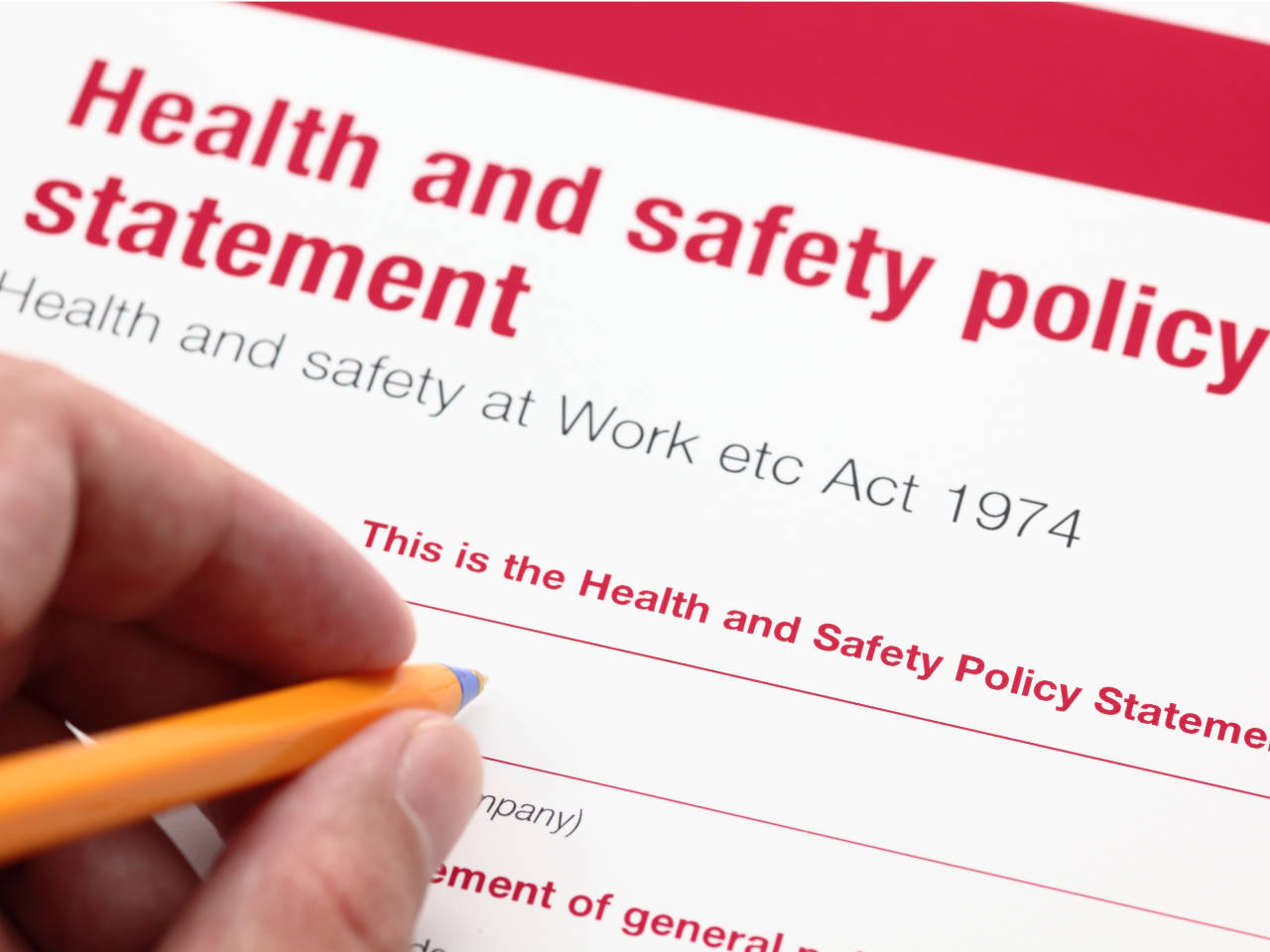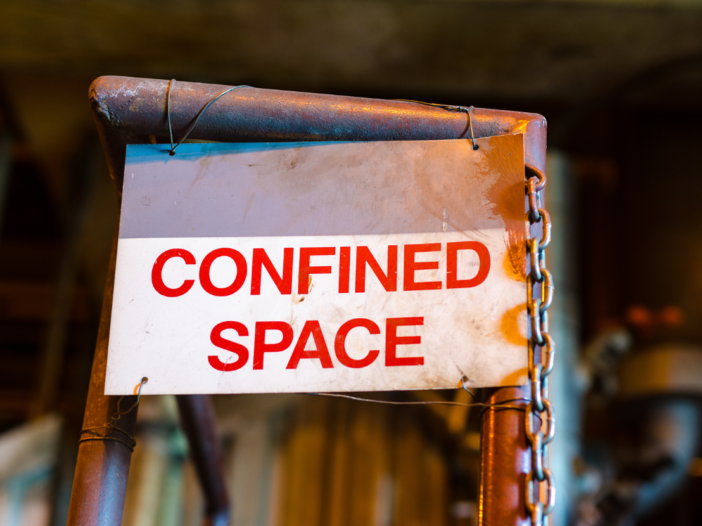
The management of health and safety at work is covered by extensive legislation and guidance.
Health and Safety Executive (HSE) statistics reveal that 135 workers were killed and 561,000 were injured at work in 2022/23, and a staggering 35.2 million working days were lost due to work-related illness or injury, costing the country over £25bn in a year.
Health and safety, therefore, is essential to every organisation and to the British economy, but is it common sense? In this guide we explore the question and discuss how to effectively manage health and safety at work.
What is ‘common sense’ in health and safety?
There was a question posted on a social media website recently that went along the lines of ‘I was asked at an interview “do you think that safety is common sense?” Any thoughts on how you might respond to if this question was asked of you?’
There then ensued a volley of responses. Some were from health and safety practitioners who appeared rather indignant that such a question should be asked, and that the interviewer was in some way belittling the complexity of health and safety management and the profession.
Other responders then tried to define what common sense is, to try and answer the question.
The remainder deferred to explaining that common sense isn’t that common and provided some examples. Here are some of the responses:
‘I for one would like to see the person who asked you that try and use that as a defence when talking to the HSE after an “accident” in their workplace. I think the term “competent person” would be brought up fairly quickly, along with training, risk assessments etc. I would like to think I have “common sense”, but it wouldn’t help me operate a piece of potentially dangerous equipment if I didn’t have the relevant skills and training.’
‘I would first ask the interviewer what he/she meant by common sense – and you’d find that they don’t know!!! I guess they mean things that people would do naturally because it is self-evident that it is good to do them and if you don’t do them it will hurt you. For example, it is common sense not to stick your hand in a fire because it will burn you. If that is what it means, then your answer would be yes for some people and no for other people.
The Merriam Webster online dictionary defines common sense as, sound and prudent judgment based on a simple perception of the situation or facts. This looks a lot to me like common sense is a behavioural tool. Just maybe if we practice behaviour-based safety then those we instruct and interact with will have the same judgment based on perceived hazards and conditions. Thus, possibly we would share common sense?’
‘Thomas Alva Edison once was quoted as saying, “the three great essentials to achieve anything worthwhile are, first, hard work, second, stick-to-itiveness, and third, common sense.” Last time I checked he was one of our greatest innovators and I do not think he was trying to justify his lack of understanding.’
Our response, at Praxis42 was, ‘My standard response is that yes health and safety does appear to be common sense, but common sense may not be common to everyone!’
This case of a Birmingham radio station is the example I use to support my point. This example perhaps shows how common sense cannot always be assumed, the importance of underpinning health and safety knowledge and the need to assess risks in an activity.
Why does the management of health and safety at work matter?
Every organisation must establish a health and safety management system and suitable working environments. This should be a high priority for an employers’ senior management team.
The Health and Safety at Work etc Act 1974 (HSWA) is the primary piece of occupational health and safety legislation in Great Britain and it places general duties on employers. Failure to comply can lead to enforcement notices, unlimited fines and up to two years in prison.
Understanding the management of health and safety at work is often perceived to be complicated and time-consuming, but that needn’t be the case. By following the Health and Safety Executive’s suggested four-step approach, you can create an effective health and safety policy, and maintain a healthy and safe workplace.
What are the four steps of managing health and safety at work?
The four steps are:
- Plan
- Do
- Check
- Act
Plan
“If you fail to plan, you are planning to fail,” Benjamin Franklin famously said, and that’s certainly true for health and safety.
Planning how you will meet your health and safety obligations will help you create policies, systems and procedures that are appropriate to your organisation and that effectively manage the risks specific to your workplace.
Questions you need to consider are:
- What is the risk profile of the organisation and is it documented?
- Where are you now and where do you want to be?
- What do you want to achieve and how will you achieve it?
- What are the health and safety organisational responsibilities at all levels in the organisation?
- How will you monitor and measure your health and safety performance with leading and lagging indicators?
- How will you deal with fires and other emergencies?
- Have you identified specific legal requirements that apply to your organisation?
Key to the effective management of health and safety at work is the requirement to appoint a competent person who can be internal or external. They will also be able to advise senior management about the organisation’s obligations and how to fulfil them. This duty is outlined in the Management of Health and Safety at Work Regulations 1999.
Understand your responsibilities under the Management of Health and Safety at Work Regulations 1999 and the importance of a risk assessment in keeping employees, customers and others in your workplace safe with our managing safely training course.
Do
The next stage is assessing the risks and implementing the plan that you create as a result.
Risk assessment
A risk assessment is a legal requirement and a useful way to manage health and safety compliance. Conducting a risk assessment will help you to identify workplace hazards and activities, which can then evaluate risks and come up with measures to control them. Risk assessments must be undertaken by a competent person.
The Health and Safety Executive’s recommended five-step process to risk assessment is:
- Identify the hazards.
- Decide who might be harmed and how.
- Evaluate the risks and decide on precautions and controls.
- Record your findings and implement.
- Review your controls.
Not all organisations have the same risks. Specific assessments may need to be carried out for hazardous activities such as working with hazardous substances, fire safety and manual handling.
Organise activities to deliver your plans
Ensuring organisational responsibilities are defined and understood is the key. This starts with senior management and cascades through the organisation.
Involve and consult with all employees to ensure everyone understands how health and safety is managed, the targets and objectives, and what role they play in the management of health and safety at work.
Being transparent and consultative will help to develop positive workplace attitudes, behaviours and a lasting positive culture.
Implement your management of health and safety at work plan
Once you’ve agreed on the control measures, you then need to implement them.
All managers and employees should be provided with sufficient resources, training and instruction, equipment, safe systems of work and controls, so they understand hazards and have the information and skills to undertake their jobs safely.
Training is particularly important for managers, and online training such as our managing safety course can help with this requirement. Managers should be provided with the essential information they need to manage health and safety at work in their area of responsibility and control.
Check
Once your plan has been implemented, you need to make sure it is working.
Measure your performance
Measuring and monitoring should not be a tick-box exercise. It is important you are aware of health and safety issues and identify any improvements that need to be made through inspection, and auditing and reviewing incidents and accidents.
You need to regularly check that your workplace risks are being managed and safe working practices are being followed by all employees and contractors.
The level of measurement will vary depending on the size and complexity of the organisation, but you should allocate appropriate resources and train employees if necessary. Measures include inspections of premises and equipment, monitoring cases of ill health and checking sickness absence records.
It is recommended that you have pre-determined measures as part of your monitoring so you can check performance.
The results should be recorded and reported back to key stakeholders in the organisation so that they can act on the findings.
Investigate the causes of accidents, incidents or near misses
If an accident or incident occurs, you must check that your health and safety controls and measures are suitable and sufficient. If not, you should review your risk assessment, follow investigation and analysis, and make appropriate changes to prevent the accident or incident from happening again.
Employers are legally obliged to record and report certain injuries, illnesses and incidents under the Reporting of Injuries, Diseases and Dangerous Occurrences Regulations 2013.
Act
The final stage in the four steps for effective management of health and safety at work is reviewing your performance and taking action from the lessons learned.
Review your performance
Reviews using data that is gathered will determine whether your health and safety policy and the procedures you have in place for managing health and safety are still appropriate and effective. The objectives and targets established in the planning stage will help provide assurance that the plan is working or where more emphasis might need to apply.
You should also review policy documents and risk assessments to check if they need to be updated. This may be the case if something has changed such as legislation or guidance, recent case law or enforcement. Documents should be reviewed if there is an accident or incident in the organisation, or to reflect findings from inspections, audits or consultation with workers.
Learn lessons
Learning lessons through measuring, monitoring, and reviewing is important.
Act on the results of investigations into accidents, incidents and near misses. You may need completely new systems and procedures. Alternatively, managers and employees may need to be trained in how to comply with procedures or they may need to be consulted to ensure the controls are adequate. Extra training, such as a managing safety course, might be necessary.
Investigations may also highlight other factors such as leadership failures, or issues around behaviour and communication.
Does Praxis42 offer training for the management of health and safety at work?
At Praxis42, we offer a range of health and safety eLearning courses that can support your organisation with the management of health and safety at work, whatever your industry. Our courses have been developed by health and safety consultants who are specialists in their fields.
Our training has reached:
- Over 2.5 million courses
- Over 1.1 million individuals who have used our services
- 4,000 organisations
- 38,000 different locations.
If you would like to to strengthen the management of health and safety at work in your organisation, please contact us on 0203 011 4242 or info@praxis42.com and a member of our team will help you.




